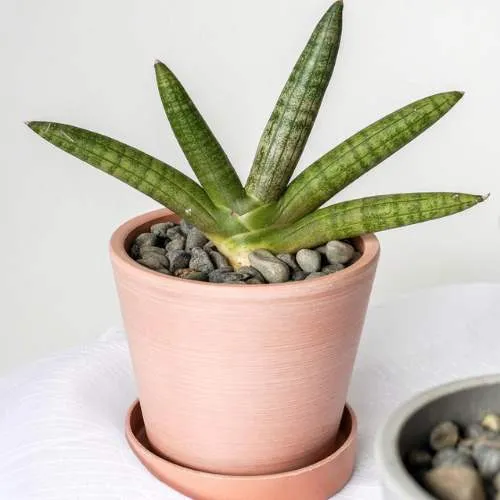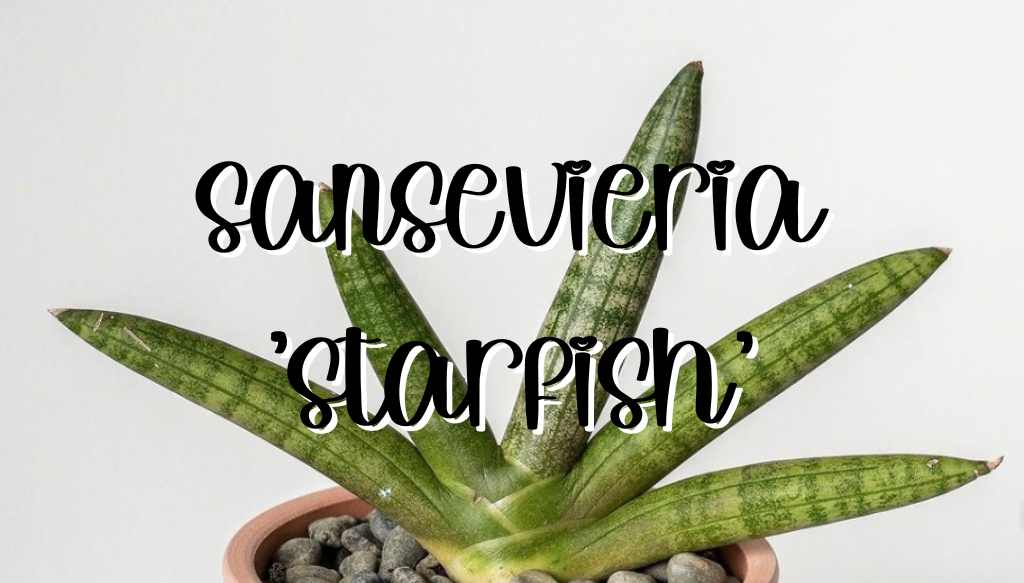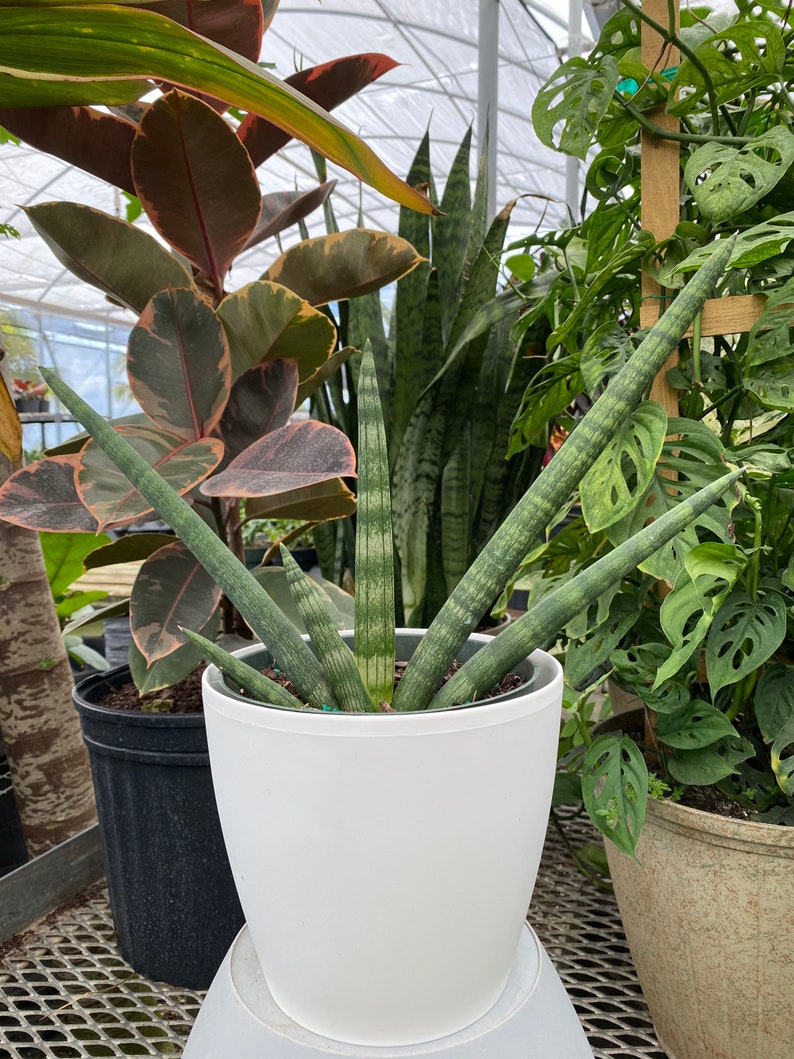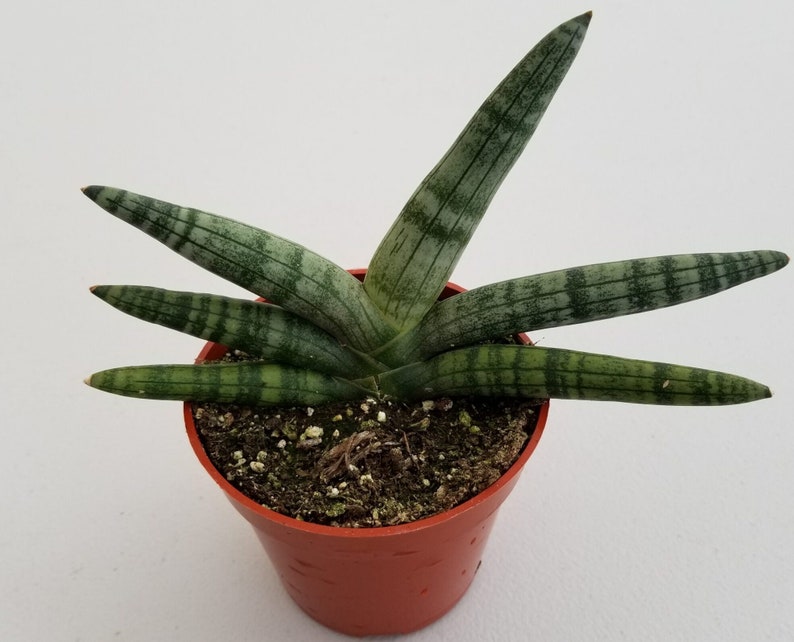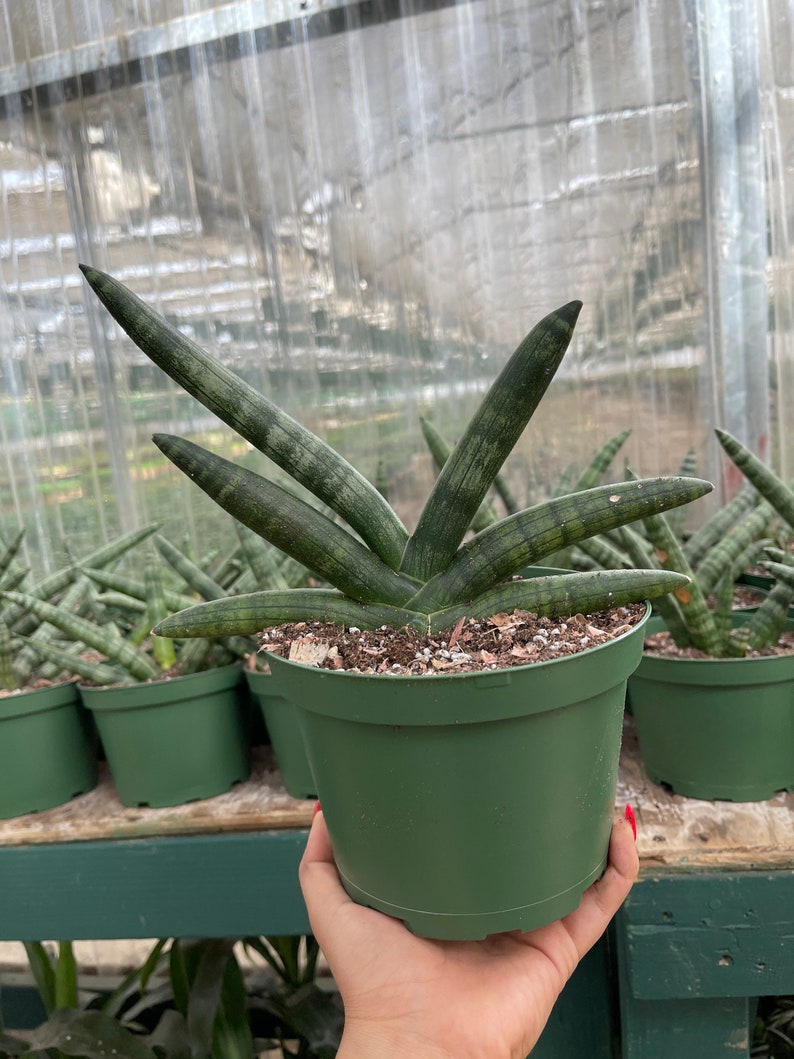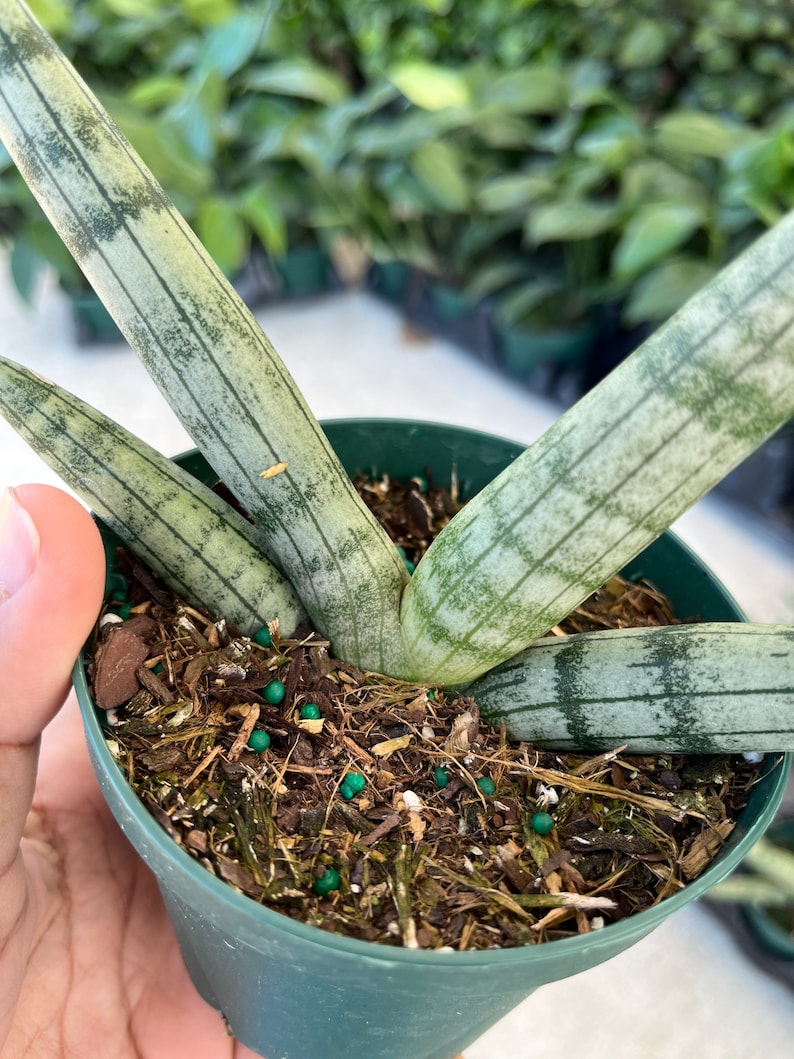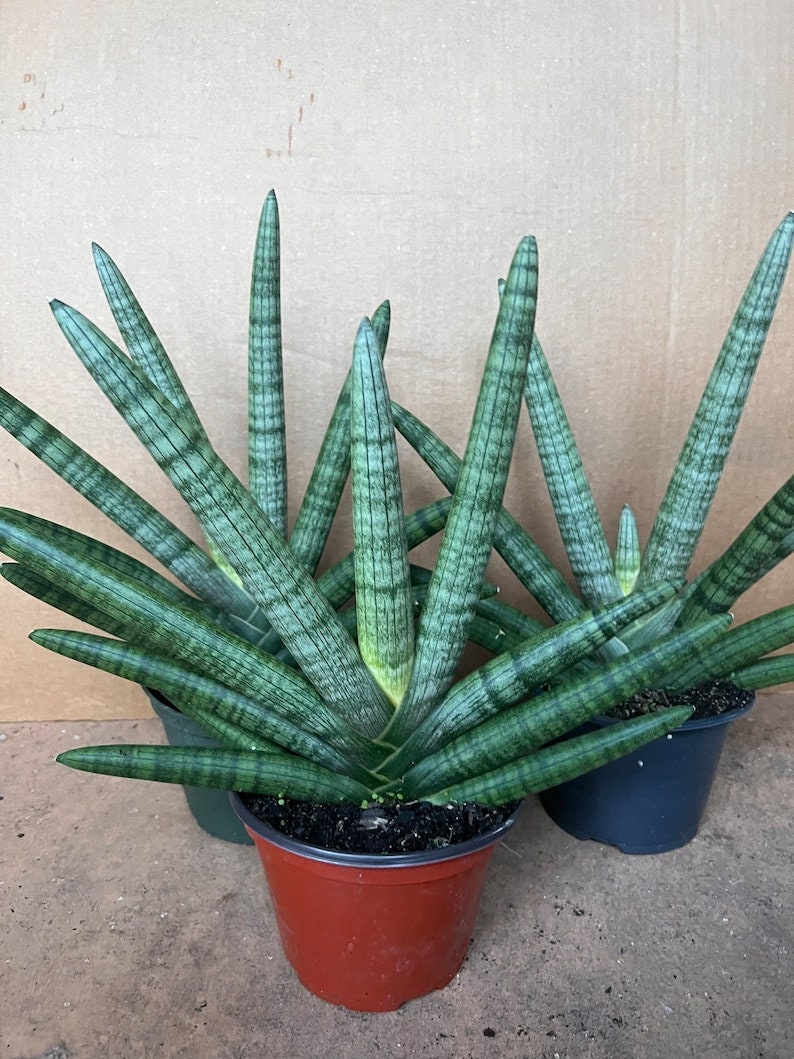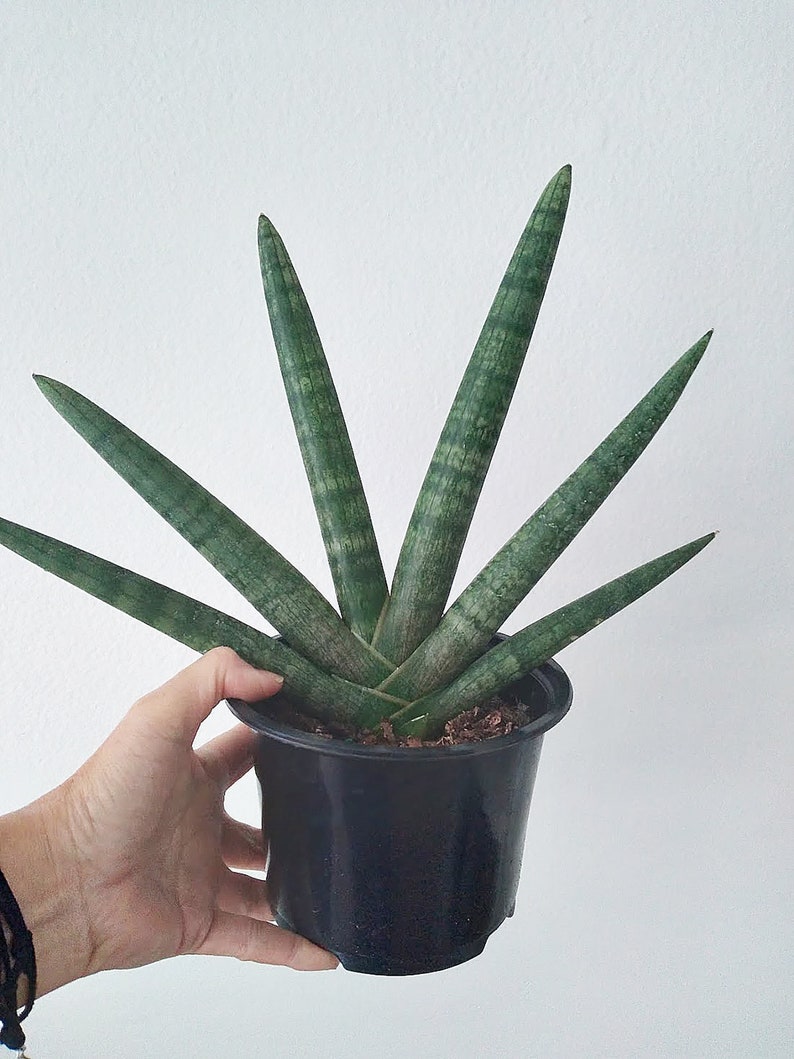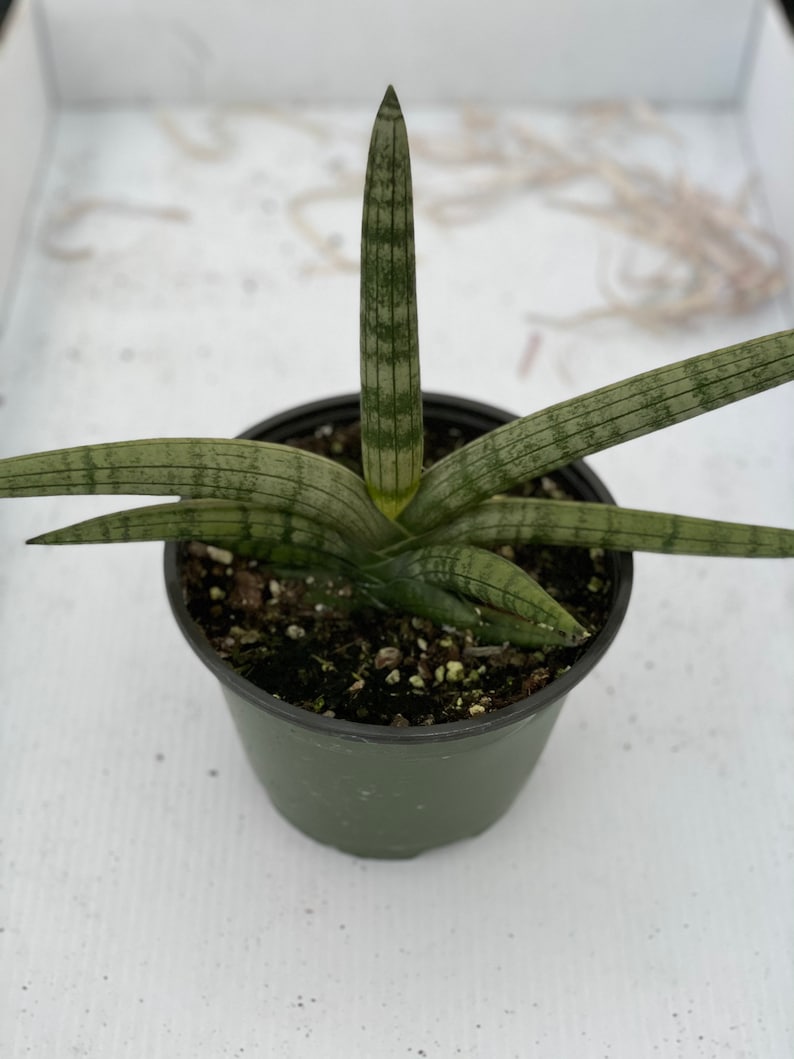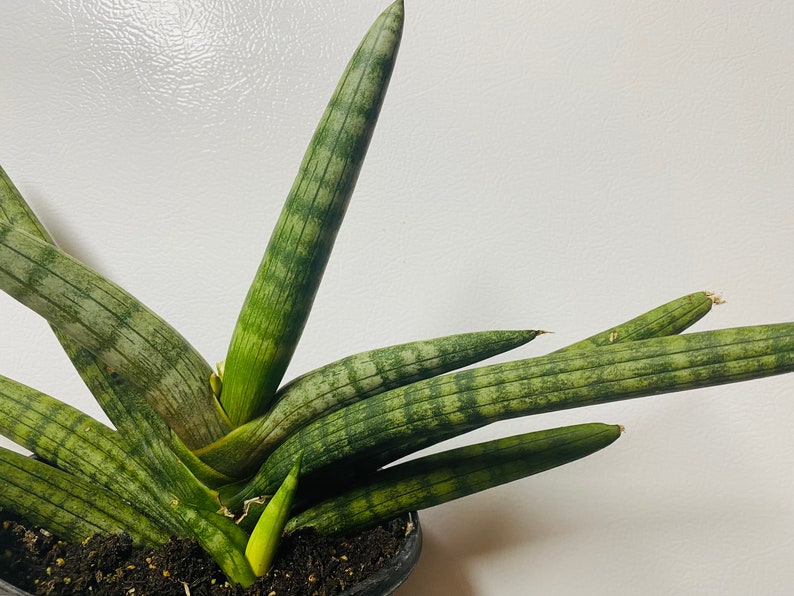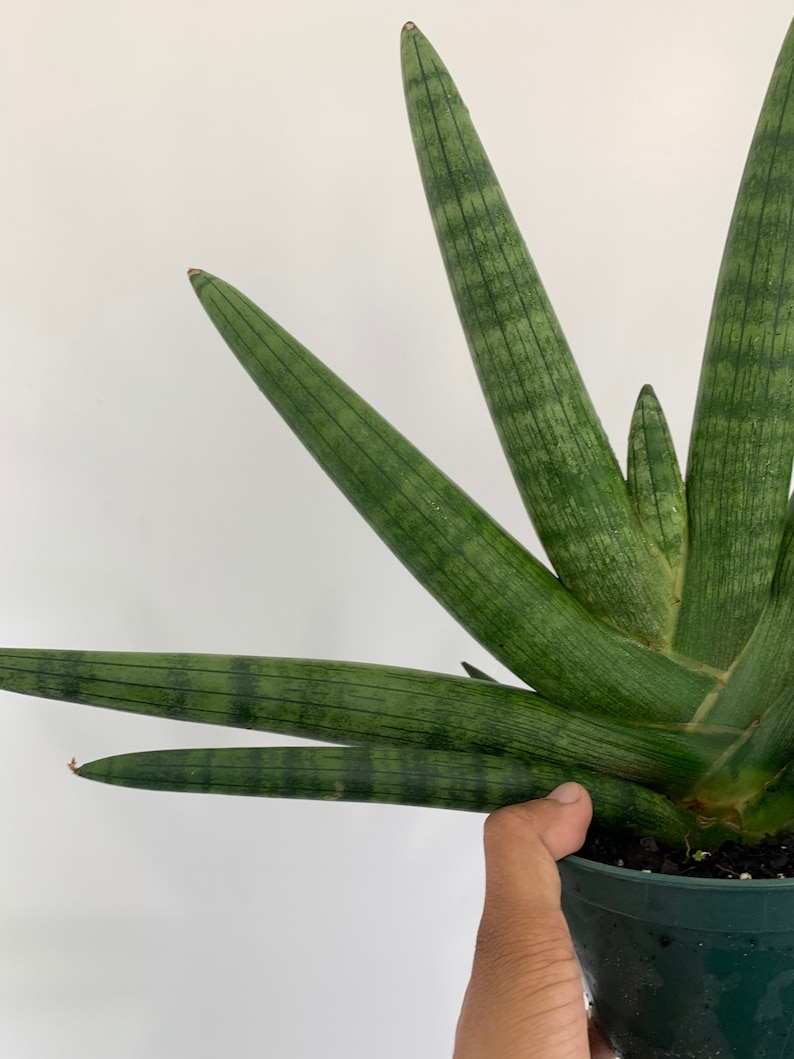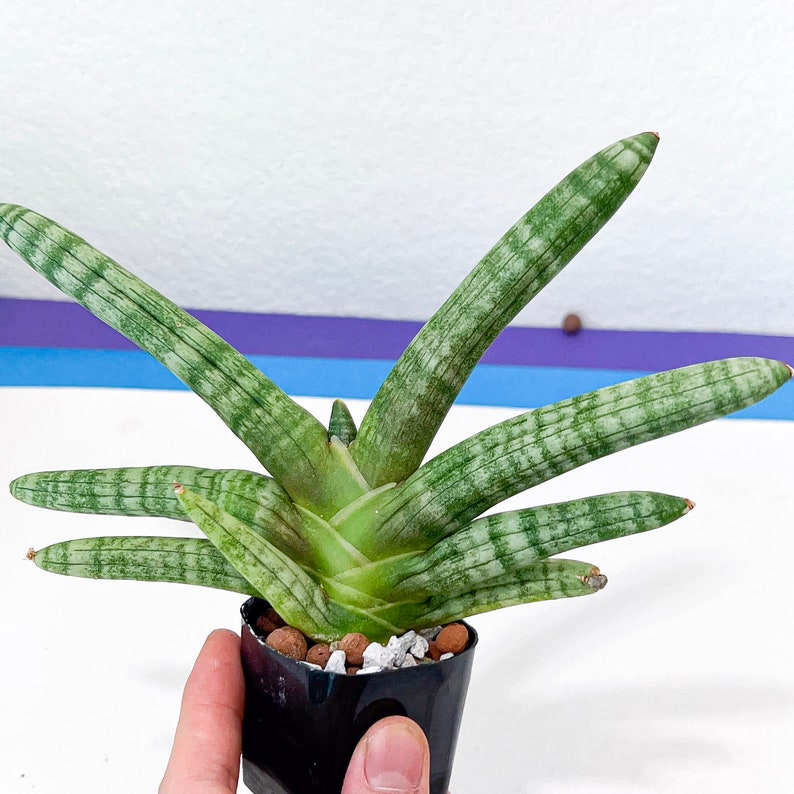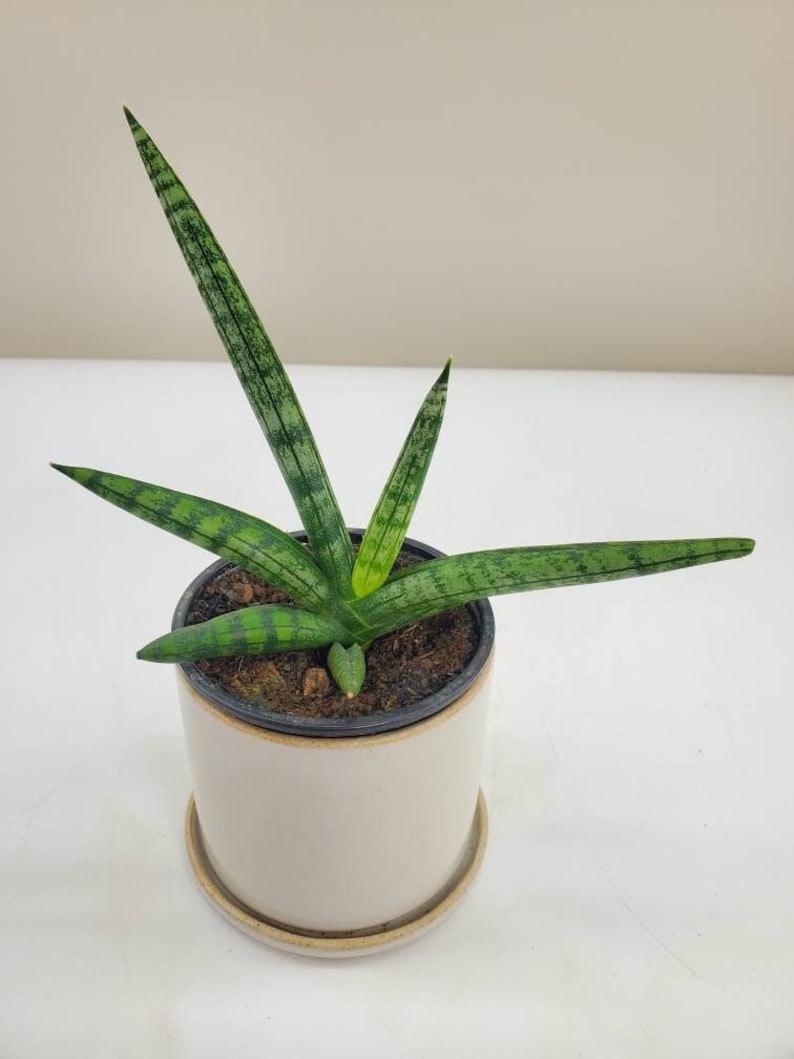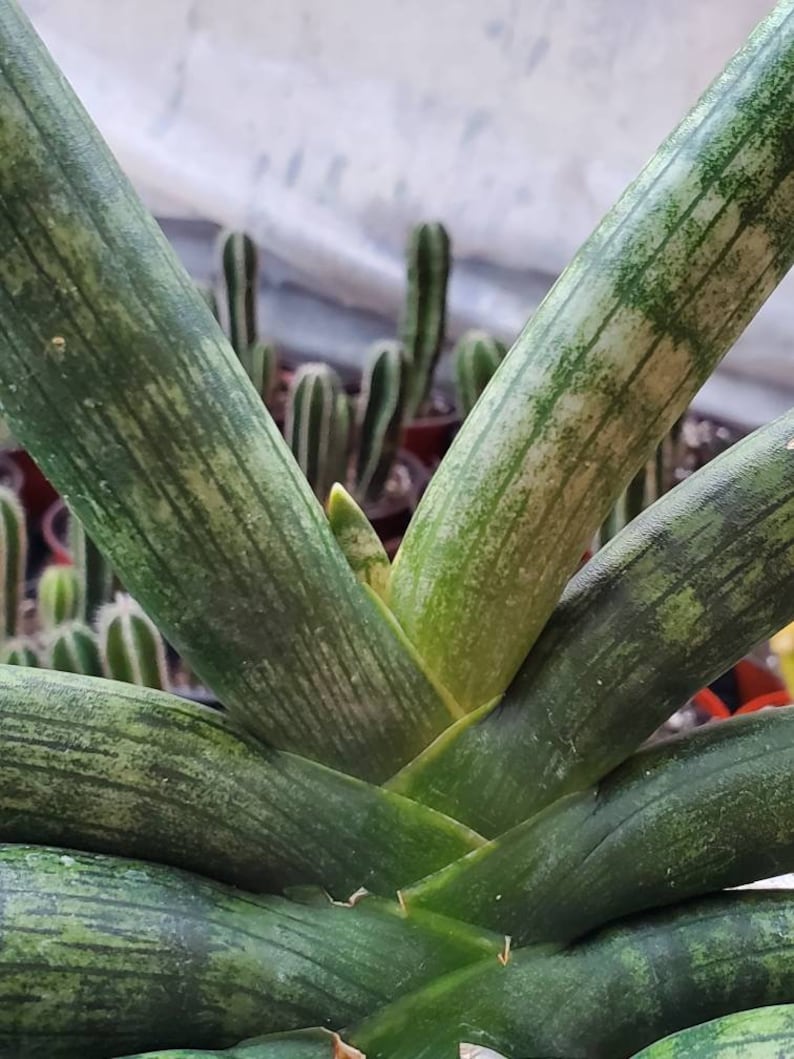In this comprehensive care guide, we’ll cover everything you need to know about Sansevieria cylindrica ‘Starfish’/’Boncel’, including its key features, care requirements, and how to propagate it. So let’s dive in and get to know this fascinating succulent!
Dig in!
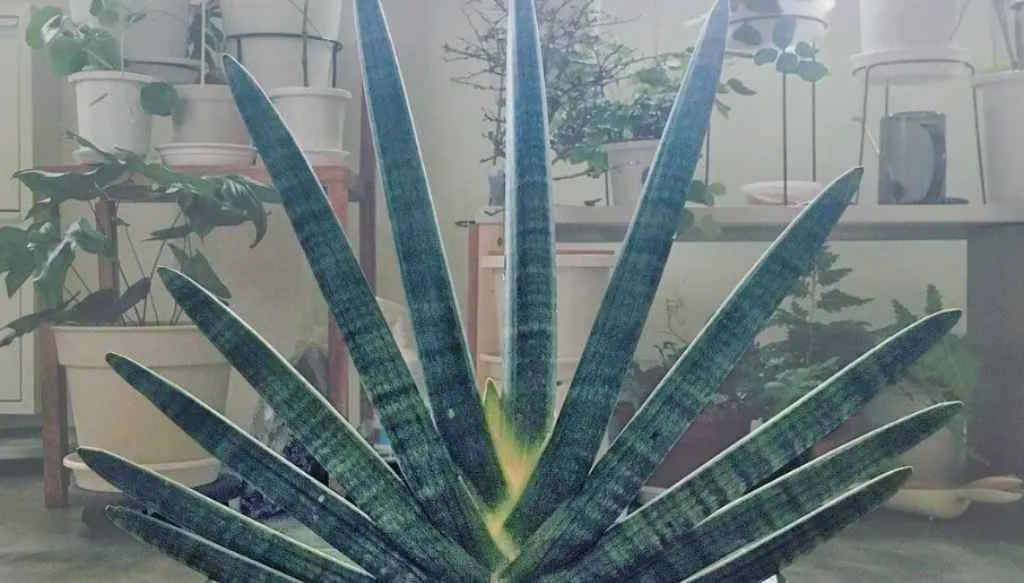
What is Sansevieria cylindrica ‘Starfish’/’Boncel’?
Are they rare?
While not exceptionally rare, the Sansevieria cylindrica ”Starfish’/’Boncel’ is a less common variety of the snake plant family. Its unique appearance and easy-care requirements make it a sought-after addition to many plant collections.
Is it a succulent?
Yes, the Sansevieria ‘Starfish’/’Boncel’ is a succulent. It is a unique cultivar, which belongs to the Asparagaceae family.
Sansevieria ‘Starfish’/’Boncel’ vs. Sansevieria cylindrica
The main difference between the two lies in their appearance. While Sansevieria cylindrica has straight, cylindrical leaves, the Sansevieria ‘Starfish’/’Boncel’ features shorter, fan-shaped leaves that resemble the arms of a starfish. Both plants share similar care requirements, making them excellent choices for beginner gardeners.
Caring for Your Sansevieria cylindrica ‘Starfish’/’Boncel’
Light requirements
Sansevieria cylindrica ‘Starfish’/’Boncel’ can tolerate a wide range of light conditions, from low to bright indirect light. However, they prefer bright, indirect light for optimal growth. Avoid placing it in direct sunlight, as this can cause the leaves to scorch and turn yellow.
Temperature and humidity
These plants thrive in temperatures between 70-90°F (21-32°C) and can tolerate low humidity levels. However, they may benefit from occasional misting in particularly dry environments. I don’t necessarily have the time to mist mine, so if I feel like the humidity is really low, I’ll place the pot on top of a pebble tray filled with water. This way it isn’t sitting in a pool of water.
Soil type
Sansevieria cylindrica ‘Starfish’/’Boncel’ prefers a well-draining soil mix, such as a cactus or succulent mix. You can also create your own mix by combining equal parts potting soil, sand, and perlite or pumice.

Consider amending your soil with Bonsai Jack’s gritty mix to ensure your succulent soil drains quickly to prevent it from staying moist for too long. Source: Etsy
Watering frequency
Since it’s a succulent, the Sansevieria cylindrica ‘Starfish’/’Boncel’ is drought-tolerant and requires infrequent watering. Allow the soil to dry out completely between waterings to prevent root rot. In general, watering every 2-4 weeks should suffice, but adjust the frequency based on your specific environment and the season. Also, wait for it to show signs of dehydration before watering. You’d be surprised at how long they can go without water!
Fertilizing
Feed your Starfish cylindrica ‘Starfish’/’Boncel’ with a balanced, water-soluble fertilizer diluted to half strength every 4-6 weeks during the growing season (spring and summer). Avoid fertilizing during the dormant winter months.

Succulent fertilizer available to purchase on Etsy.
Growth and Size
How big do they get?
Sansevieria cylindrica ‘Starfish’/’Boncel’ typically grow to be between 6-12 inches (15-30 cm) tall and spread outwards to create a fan-like shape that can reach up to 24 inches (60 cm) wide.
How fast does Sansevieria cylindrica ‘Starfish’/’Boncel’ grow?
The growth rate of Sansevieria cylindrica ‘Starfish’/’Boncel’ is relatively slow. However, with proper care, the plant will continue to develop new leaves and eventually form offsets or “pups.”
Propagation
Can you propagate Sansevieria cylindrica ‘Starfish’/’Boncel’?
Yes, you can propagate it through division or by rooting leaf cuttings.
How to separate Sansevieria cylindrica ‘Starfish’/’Boncel’
To separate pups, carefully remove the plant from its pot and gently separate the pups from the main plant, ensuring that each pup has a portion of the root system. Plant the pups in a well-draining soil mix and follow the regular care routine.
Blooming and Pruning
How often do they bloom?
Flowering in Sansevieria cylindrica ‘Starfish’/’Boncel’ is not guaranteed and can be infrequent. Under optimal conditions, they may produce fragrant, tubular flowers on a long stalk, usually during the spring or summer months.
How do you prune it?
Pruning is generally not necessary for Sansevieria cylindrica ‘Starfish’/’Boncel’. However, if you need to remove damaged or yellowing leaves, use a clean, sharp pair of scissors or pruning shears to cut the leaf close to the base.
Common Issues and Solutions
Overwatering
Overwatering is a common issue with Sansevieria cylindrica ‘Starfish’/’Boncel’. To prevent this, allow the soil to dry out completely between waterings and use a well-draining soil mix.
Brown tips and yellowing leaves
Brown tips on can be a result of low humidity or inconsistent watering. To resolve this issue, maintain a consistent watering schedule and consider misting your plant occasionally if the air is particularly dry. Yellowing leaves may indicate overwatering or sunburn. Adjust your watering schedule and move the plant to a location with bright, indirect light.
Pests
Sansevieria cylindrica ‘Starfish’/’Boncel’ is generally resistant to pests, but they can occasionally attract mealybugs or spider mites. To treat infestations, wipe the leaves with a solution of water and mild dish soap or use a suitable insecticidal spray.
Root rot and repotting
Root rot can occur if the plant is consistently overwatered or if the soil does not drain well. If you suspect root rot, remove the plant from its pot, cut away any affected roots with a clean, sharp pair of scissors, and repot the plant in fresh, well-draining soil.
When you’re rooting or transplanting your succulents and cacti, use SUPERthrive to help reduce the chance of transplant shock and grow a strong root system.
Toxicity and Safety
Are starfish plants poisonous?
Yes, Sansevieria cylindrica ‘Starfish’/’Boncel’ plants are toxic if ingested and can cause gastrointestinal distress in both humans and pets. Keep the plant out of reach of children and pets to avoid accidents.
Sansevieria cylindrica ‘Starfish’/’Boncel’ is a unique, low-maintenance succulent that can add a touch of intrigue to any plant collection. By following this comprehensive care guide, you’ll be well-equipped to provide the best possible environment for yours to thrive. Happy planting!
